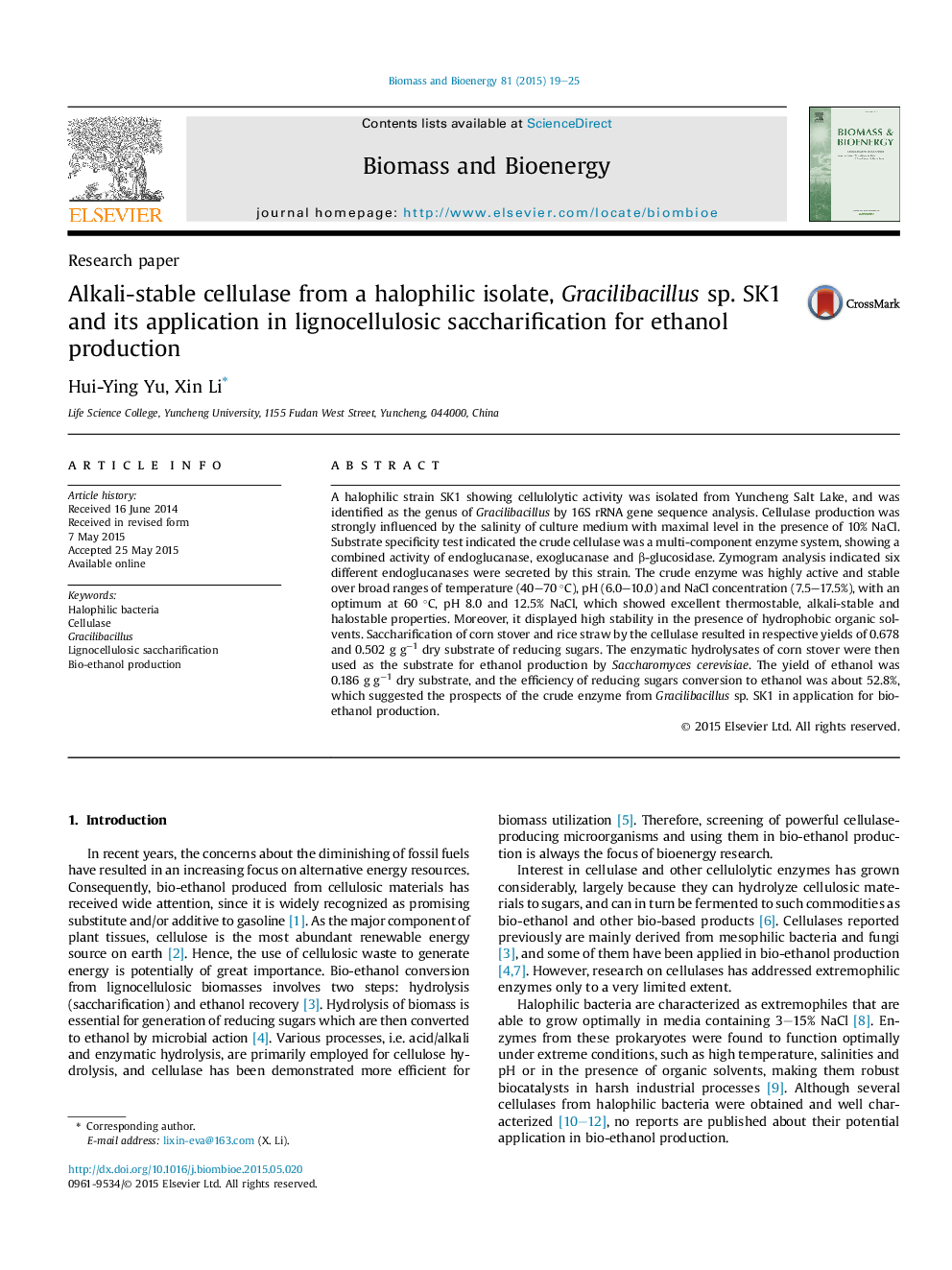| Article ID | Journal | Published Year | Pages | File Type |
|---|---|---|---|---|
| 7063713 | Biomass and Bioenergy | 2015 | 7 Pages |
Abstract
A halophilic strain SK1 showing cellulolytic activity was isolated from Yuncheng Salt Lake, and was identified as the genus of Gracilibacillus by 16S rRNA gene sequence analysis. Cellulase production was strongly influenced by the salinity of culture medium with maximal level in the presence of 10% NaCl. Substrate specificity test indicated the crude cellulase was a multi-component enzyme system, showing a combined activity of endoglucanase, exoglucanase and β-glucosidase. Zymogram analysis indicated six different endoglucanases were secreted by this strain. The crude enzyme was highly active and stable over broad ranges of temperature (40-70 °C), pH (6.0-10.0) and NaCl concentration (7.5-17.5%), with an optimum at 60 °C, pH 8.0 and 12.5% NaCl, which showed excellent thermostable, alkali-stable and halostable properties. Moreover, it displayed high stability in the presence of hydrophobic organic solvents. Saccharification of corn stover and rice straw by the cellulase resulted in respective yields of 0.678 and 0.502 g gâ1 dry substrate of reducing sugars. The enzymatic hydrolysates of corn stover were then used as the substrate for ethanol production by Saccharomyces cerevisiae. The yield of ethanol was 0.186 g gâ1 dry substrate, and the efficiency of reducing sugars conversion to ethanol was about 52.8%, which suggested the prospects of the crude enzyme from Gracilibacillus sp. SK1 in application for bio-ethanol production.
Keywords
Related Topics
Physical Sciences and Engineering
Chemical Engineering
Process Chemistry and Technology
Authors
Hui-Ying Yu, Xin Li,
